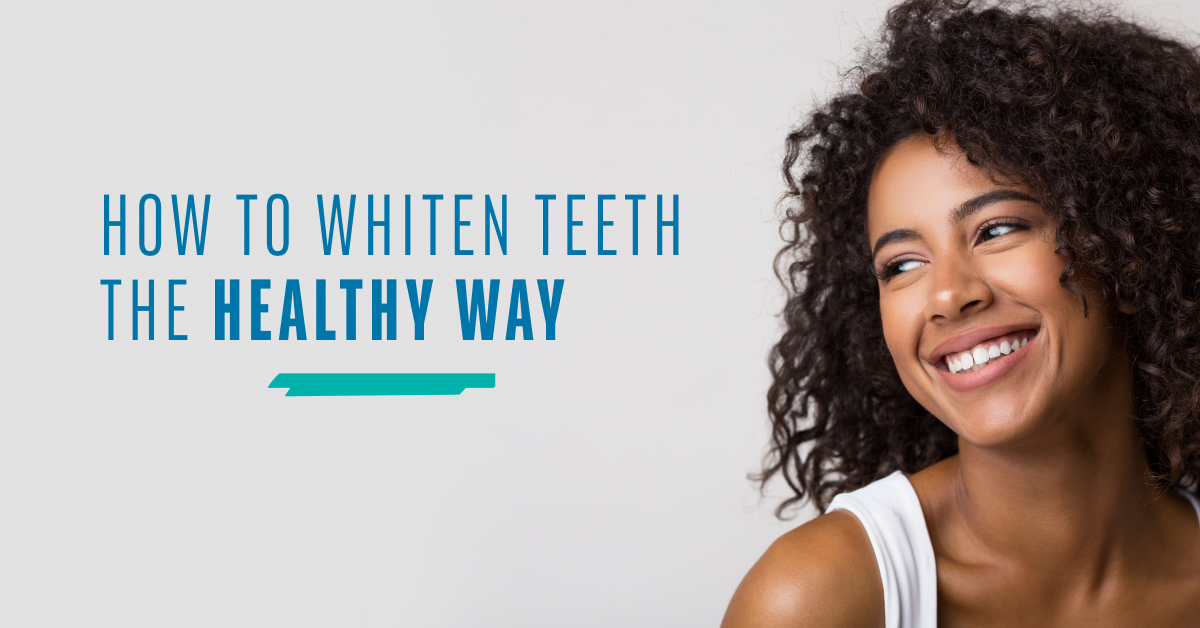A guideline for your patients
By Tanna Bowen
Internet searches, ads, and store shelves are all packed with products that claim to whiten your teeth. And many do. Have you ever wondered, however, if they’re safe? Have you wondered why there are so many? And what the difference is?
Well, here’s a resource that can help answer those questions. With this you can make a confident choice—that won’t upset your dentist.
Some of the homebrews floating around Pinterest and TikTok are ineffective (at best) or cause permanent damage (at worst).
So, here are a few key factors you should look for in a take-home whitening treatment:
- Effective ingredients (and any potential risks associated with them)
- Treatments that will be convenient for your lifestyle
- Controlled-release gels with good pH balance
- Instructions and tips to manage any sensitivity
- Beware of illegal internet offers
Which Formula is Safest?
Quality whitening treatment starts with the formula.
First, you’ll want to look for whitening toothpaste that has a safe level of abrasiveness (to get rid of surface stains). Once you’ve taken care of surface stains, you’ll know if the whitening needs to go any deeper into your teeth.
Beware of highly abrasive whitening treatments like charcoal. It can get stuck between your teeth (to the point where a hygienist will have to get it out for you), and worst of all it can damage your tooth enamel.
For chemical whitening that goes beneath the tooth surface, look for the following
- High water content
- Why? Because moist teeth mean less dehydration (for longer lasting results).
- pH Balance
- Why? Too much acid corrodes your beautiful enamel, plus stable pH helps the gel to have a controlled release (for even longer lasting results).
- Up to 6% Hydrogen Peroxide and/or 16% Carbamide Peroxide
- Why? It’s the part that whitens and nothing does it better.
- Potassium Nitrate, Fluoride, and Xylitol
- Why? How does a comfortable whitening experience, and safely sweetened for improved taste sound?
Going rogue with the amount of time you whiten (or which concentration you use) can lead to botched shade results, injury to your gums, and a mouth full of pain.
Dr. Susan McMahon, DDS, is a leading cosmetic dentist. She advises which products vs. which treatment can lead you to sensitivity, irritated gums, increased potential for demineralization, roughening or softening tooth surfaces, and unwanted affects to the color of previous restorations.
For elements you want to avoid, make sure to also pay attention to:
- Products that don’t include water (aka Anhydrous products). When your teeth are dehydrated it might cause shade relapse, so you wouldn’t get a reliable result.
- Ignore claims that lights will make whitening more effective. Many clinical trials repeatedly show that lights do not increase the effectiveness of whitening treatments. Some studies suggest that bleaching lights may even be harmful to tissues in your mouth.
- Keep in mind that studies about safety and effectiveness are not required by a lot of producers of these products. So, if you see a brand that can provide proof to back their claims, they’re all the more reliable. Choose a responsible brand.
- Non-peroxide products will rarely have any evidence that they’re more effective than peroxide products. If you want a safe and effective treatment that gives you the most for your money, peroxide is the way to go.
Whitening When Teeth Get Sensitive
One of the most common concerns around chemical teeth whitening is sensitivity. You can manage and minimize the possibility; and reduce the effects if it does happen.
Step 1:
Talk to your dentist. If there are any areas on your teeth that should be checked before starting your whitening, he or she can treat areas (such as cavities) that might contribute to increased sensitivity.
Step 2:
Several weeks prior to starting your whitening treatment, brush every day with a sensitivity relief toothpaste. Look for the ingredient potassium nitrate.
Step 3:
Get a fluoride treatment from your dentist (at least a day) before starting your whitening process. This is because a fluoride varnish thinly coats your teeth, which reduces that sensitive feeling. Don’t worry, you’ll brush it off before it affects the whitening treatment.
Step 4:
Start with a low concentration and work your way up. If your teeth begin to ache (or temperatures like hot or cold bother your teeth), then pick a lower concentration. Or wear the same concentration for less time. Look for products that will let you be flexible until you find a good balance.
Remember: Leaving chemicals on your teeth longer than the recommended time frame is a direct route to sensitive teeth.
Step 5:
Supplement your whitening with a desensitizing gel, along with the sensitivity relief toothpaste. Use of these during whitening can make a big difference. Your dentist can help recommend a safe product if you’re not sure.
Choose a Routine You Know You Can Finish
Length of treatment usually depends on level of color change.
If you’re not sure how it’s affecting your tooth shades:
Keep your color guide nearby. Changes in color can happen so gradually the eye doesn’t detect them at first. Each tooth is unique, and so may accept the whitening differently. Comparing your teeth to the color guide will let you be subtle with your whitening. It will also encourage you to finish your regimen.
Some of the different whitening options:
Do you want something disposable, while you drive to work? Or would you rather whiten at home and watch TV? There are also overnight wear options. Gels will take days, possibly even weeks. Strips will also take weeks.
For surface stains that are covering healthy teeth below, toothpastes and mouthwashes may be all you need. Or, try a low concentration gel.
Now that you’re armed with the basics, you can feel confident in your choice! Happy smiles!
If you’d like to know more about some of these options (or want a recommendation for a safe whitening brand) here’s a great place to start: Whitening FAQs








